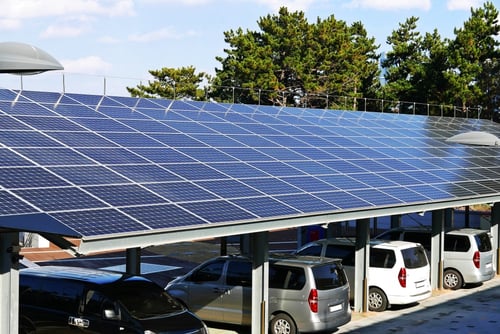2019: Last Chance to Get the 30% Federal Tax Credit for Solar Power

The federal tax credit for solar power has been one of the best incentives for property owners who install photovoltaic systems. In a few words, when the owners of residential or commercial properties install a solar array, they get back 30% of system costs as a federal tax credit. In terms of net cost, this is like getting a 30% discount when going solar.
Although the federal tax credit program has been extended in the past, the 30% benefit is scheduled to end on December 31, 2019. The tax credit will then be reduced to 26% in 2021 and 22% in 2022. From 2022 onwards, the solar tax credit will only be 10% for commercial properties, and 0% for residential buildings.
- The tax credit percentage is based on the year when installation of the PV system begins. The tax credit applies even if installation is not completed during the same year.
- However, solar power systems that get the tax credit must be fully operational by December 31, 2023.
Solar power systems become more affordable each year, and large-scale PV arrays with a cost below $1/watt are now common. However, a 30% tax credit is an excellent benefit regardless of solar power cost reductions. For property owners considering solar power, the best recommendation is starting the project before the end of 2019, to get the full tax credit of 30%.
Improve the performance of your building with renewable energy.
Combining the Federal Tax Credit with Other Solar Incentives
A photovoltaic system that gets the 30% federal tax credit can also get benefits from other solar incentive programs. However, the presence of other incentives influences the way in which the federal tax credit is applied. Some common incentive types found along with the federal tax credit are cash rebates and state tax credits.
When there are cash rebates for solar power, these must be deducted before calculating the 30% tax credit. As an example, consider a photovoltaic system with a cost of $50,000:
- Assuming the rebate is $7,500, the net cost of the PV system is reduced to $42,500.
- In this case, the federal tax credit would be $12,750 (30% of $42,500).
- With no rebate, the tax credit would have been $15,000 (30% of $50,000).
- Rebates are always recommended even when part of the tax credit is lost. In this example, the tax credit is reduced by $2,250, but the rebate amount is $7,500.
The procedure for state tax credits is different, since both federal and state benefits are applied based on the PV system cost paid by the owner.
- Consider a state tax credit of $5,000 and a PV system with a cost of $50,000, like in the previous example.
- The federal tax credit would still be calculated based on $50,000 and not $45,000.
- In other words, the amount is $15,000 even if there is also a state tax credit of $5,000.
When there are both rebates and state tax credits, the rebate is applied first. Then, the state and federal tax credits are applied independently for the net cost (total cost minus rebate).
Some states have a special feed-in tariff for solar generation exported to the grid, and there are also renewable energy credits that are based on energy production. These incentive programs do not affect the federal tax credit in any way, since they are based on the energy generated and not the PV system cost.
How PV System Ownership Affects the Federal Tax Credit

The 30% federal tax credit is a benefit for the legal owner of a photovoltaic system. This means that home and business owners get the tax credit even if a solar power system is purchased with a loan - the building owner assumes a debt, but the bank does not own the solar array.
Building owners do not get the solar tax credit if they lease a photovoltaic system, or if they sign a Power Purchase Agreement (PPA). In these cases, the federal tax credit is for the PV system provider, since they retain ownership over the installation. However, building owners may still get an indirect benefit, since the federal tax credit allows lower prices in solar leases and PPA contracts.
Does the Federal Tax Credit Cover Energy Storage?
Energy storage systems are eligible for the federal tax credit, but only if they are combined with a photovoltaic array or another renewable generation system that qualifies for the incentive. In other words, a stand-alone energy storage system is not eligible.
- In residential settings, energy storage gets the tax credit if all the charge is provided by a local renewable source.
- In commercial settings, the energy storage system must be charged with a local renewable source at least 75% of the time.
- The tax credit for commercial energy storage is based on the usage of local renewable energy: a storage system that meets the 75% requirement gets a 22.5% tax credit, while a storage system that only uses local renewable power gets the full 30% tax credit.
Depending on local tariffs and regulations, energy storage may or may not be a good investment. Before purchasing a solar array or energy storage system, the best recommendation is getting a professional assessment of your property.

Michael Tobias
Michael Tobias, the Founding Principal of NY Engineers, currently leads a team of 150+ MEP/FP engineers and has led over 4,000 projects in the US
Join 15,000+ Fellow Architects and Contractors
Get expert engineering tips straight to your inbox. Subscribe to the NY Engineers Blog below.

